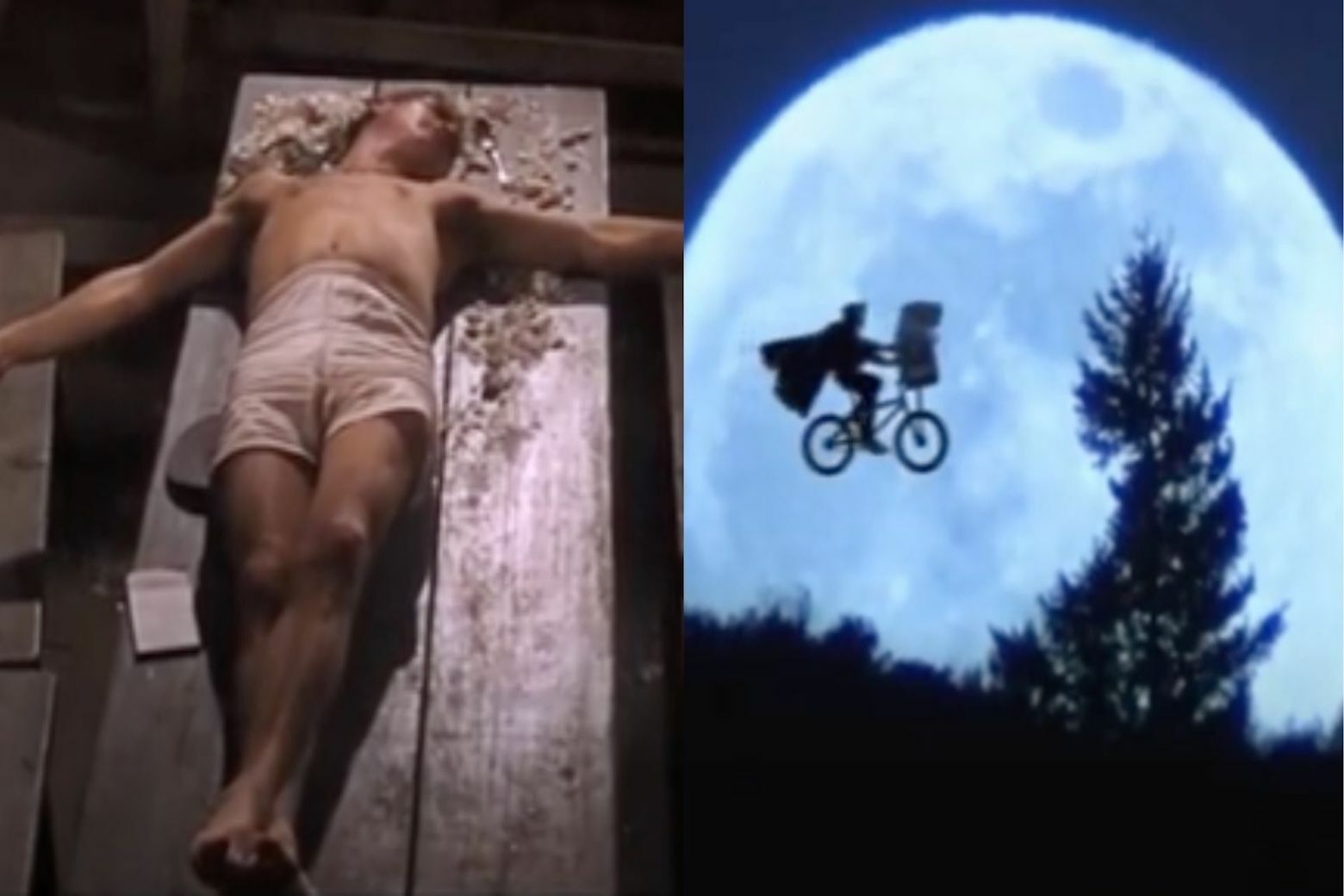
Happy Easter and Passover week to those who celebrate!
Every year, “Ben-Hur” (1959) and “The Ten Commandments” (1956) are TV traditions. However, there are some undercover Christ allegories that you might not expect.
I present the case for “Cool Hand Luke” (1967) and “E.T. The Extra-Terrestrial” (1982).
‘Cool Hand Luke’
On the surface, “Cool Hand Luke” follows a petty criminal named Luke (Paul Newman), who is sentenced to do hard time on a chain gang in the Deep South of the 1950s.
But beneath the surface, it’s a deceptively deep Christ allegory.
Early on, Dragline (George Kennedy) functions as John the Baptist, as Luke stands near water at a sink: “You don’t have a name until Dragline gives you one.”
You’ll note that Luke wears No. 37 on his prison outfit, symbolizing the 37th verse in the New Testament book of Luke: “For with God, nothing shall be impossible.”
Fittingly, Luke performs a series of “miracles” for his fellow inmates, most notably the impossible feat of eating 50 eggs. Afterward, director Stuart Rosenberg uses a high-angle shot to show Luke sprawled out on a table in the shape of a crucifix.
After rabble-rousing antics predating Andy Dufresne in “The Shawshank Redemption,” Luke is punished by being put in a box for three days, only to climb out of a grave.
After the death of his mother, Luke grabs a banjo to sing “Plastic Jesus,” including the line, “I ain’t scary, ’cause I got the Virgin Mary, assuring me that I won’t go to hell.”
Eventually, Luke’s followers feed off him like the Last Supper, with 12 inmates listed in the end credits to draw a direct parallel to Christ’s 12 disciples.
It all builds to Luke praying in the garden where he is betrayed by Dragline (i.e. Judas) as Luke stares up to the rafters of a church as if to say, “Why hast thou forsaken me?”
As Luke proclaims, “What we’ve got here is a failure to communicate,” he is shot and killed through the window. The gunman is a God-like figure, whose eyes we never see behind a pair of dark sunglasses, which are crushed by a car.
Seeing as this is a film from the counter-culture era of 1967, its message may very well be anti-religion, as Luke rips up a photo of himself, claiming he made it all up, but his disciples tape the photo back together in a crucifix shape across Newman’s body.
Either way, it proves the power of Jesus to inspire his followers who desperately want to believe in him, ending with a high-angle shot of a crossroads that forms a cross.
‘E.T. The Extra-Terrestrial’
On the surface, Steven Spielberg’s immortal childhood classic follows a young boy named Elliott who encounters an alien and helps him “phone home” to his ship.
However, beneath the surface, it’s also a deceptively deep Christ allegory.
The movie opens with the space ship appearing in the sky like the Christmas Star.
Elliott discovers E.T. in his backyard shed, similar to the iconic nativity stable.
E.T. performs a series of miracles by levitating balls in Elliott’s room to form the planets of the solar system and healing Elliott’s bloody finger with a divine touch: “Ouch.”
Just as Jesus walked on water, E.T. powers Elliott’s bike to fly off a cliff and soar across the moon (in an iconic shot that became the logo for Spielberg’s Amblin studio).
If you’re still not convinced of the allegory, note that E.T. eventually dies at the hands of greedy government scientists (i.e. Romans), only to be resurrected just like Christ.
As E.T.’s heart glows during his final goodbye, he says the line, “I’ll be right here,” reminding us of the Christian mantra that “the kingdom of heaven is within you.”
Finally, he ascends into the heavens on his space ship in the final shot.”
Spielberg himself joked, “A nice Jewish boy making movies about resurrection.”








